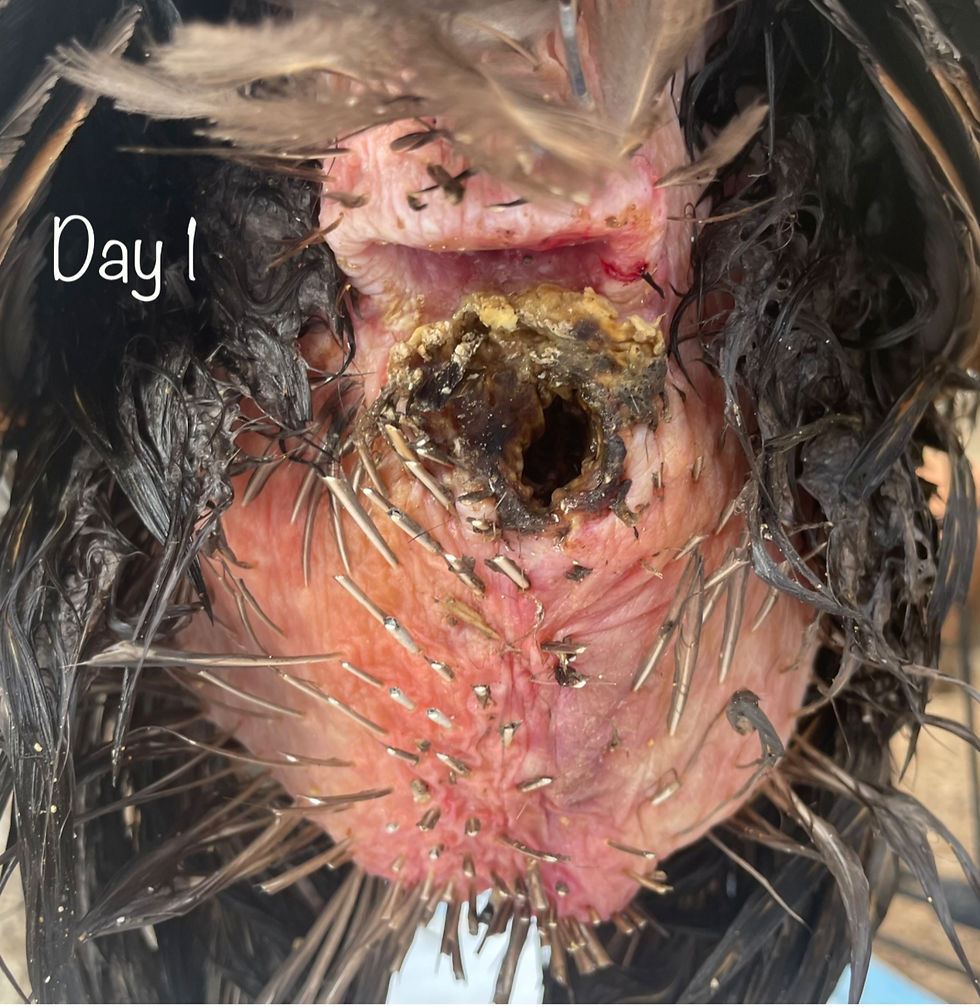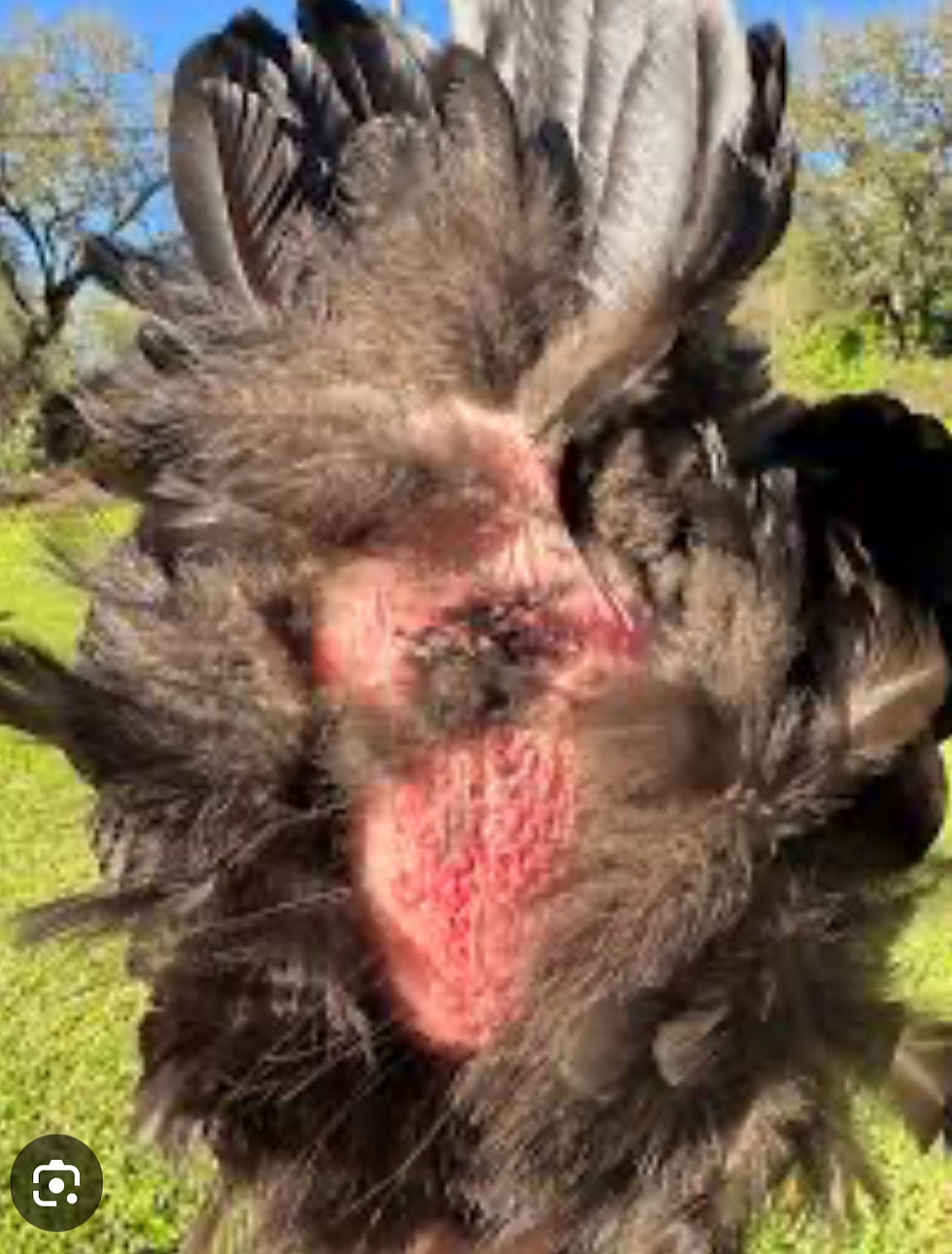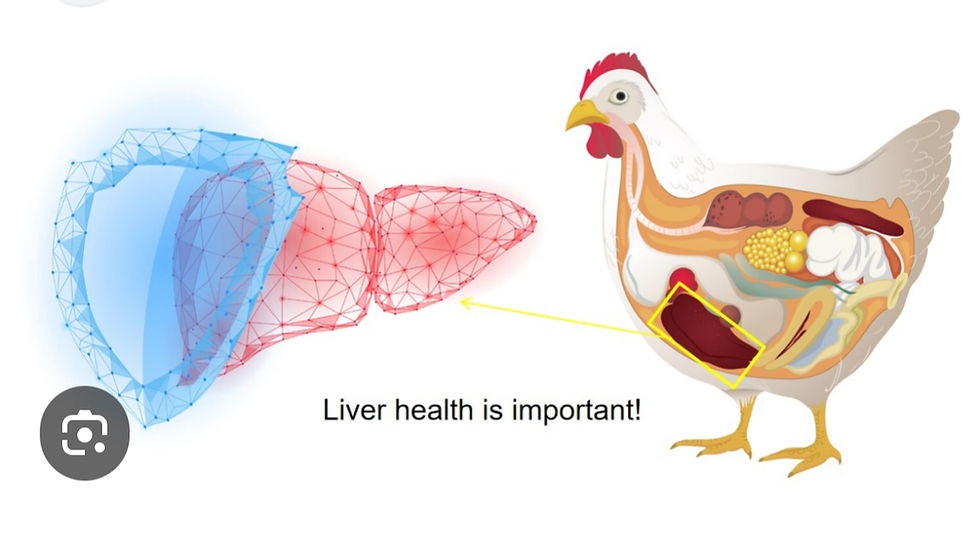A Summer Danger: Flystrike in Backyard Chickens: What You Need to Know
- Donna Weekes

- Aug 3
- 4 min read

Flystrike is an extremely important topic for backyard chicken keepers. A hidden danger that can endanger your birds, resulting in death. What are its causes, symptoms, prevention, and treatment options? With this information, you can better protect your chickens from this serious threat.
What is Flystrike?
Flystrike, also known as myiasis, occurs when certain flies, particularly the blowfly, lay their eggs on chickens. When the eggs hatch, maggots feed on the chicken's flesh, leading to injury and distress. This condition can develop very quickly and can result in severe health issues or even death and progresses within hours if not treated promptly. In fact, studies show that untreated cases can lead to death in over 30% of affected birds. Occurrences of flystrike are most common in warm weather.
A dropping-soiled vent area can cause the skin to break down, which is a welcoming environment for flies.
Causes of Flystrike
Understanding the underlying causes of flystrike is essential for prevention. Here are several contributing factors to keep in mind:
Moisture: Chickens are particularly susceptible to flystrike when their environment is damp. Wet litter or chickens with soiled feathers, often due to diarrhea, can easily attract flies. A droppings-soiled vent area can cause the skin to break down, which may as well be a "vacancy" sign hanging in front of Hotel Maggot. Chickens consume more water in hotter days of summer which will result in runnier droppings, possibly sticking to their feathers.
Injuries: Chickens with open wounds or skin irritations are prime targets for flies looking to lay their eggs. Even minor injuries can lead to serious infestations.
Poor Sanitation: Inadequate cleanliness in the coop and surrounding areas can promote the buildup of waste and damp litter. Flies thrive in these conditions, leading to increased flystrike risk.
Overcrowding: When chickens are packed into a small area, stress levels rise, leading to injuries. A study showed that flocks exceeding four chickens per square meter had a 60% higher incidence of injuries, which subsequently raised the likelihood of flystrike.
Symptoms of Flystrike
Identifying symptoms early on is crucial for effective treatment. Look for the following signs:
Restlessness: Infected chickens often show agitation, scratching at their feathers as they become increasingly uncomfortable.
Unusual Behavior: Isolation from the flock is common in affected chickens, which may indicate pain or discomfort.
Visible Maggots or Eggs: In severe cases, you may find maggots or eggs around the vent or other parts of the body, signaling an urgent problem.
Foul Odor: The presence of dead tissue causes a strong, unpleasant smell, often indicating an advanced case of flystrike.
Inflammation: Check for redness or swelling around the vent or any existing wounds, which are signs that further action is needed.
Prevention Methods
Prevention should always be the focus when it comes to flystrike. Implement the following practical steps to safeguard your birds:
Maintain Cleanliness: Regularly clean the coop to remove waste with the use of sand for litter and droppings boards under roosts to remove chicken droppings. This can drastically reduce the chance of fly reproduction and keep your environment safe.
Inspect for Injuries: Check your chickens frequently for any signs of injury. Promptly treating minor wounds can prevent flies from being attracted to your birds.
Keep Vents on Chickens clean and Dry: If droppings accumulate beneath the vent, give the chicken a bath. If feathers are impossible to clean thoroughly, carefully trim them off with scissors.
Reduce Overcrowding: Make sure your chickens have enough room to move around comfortably. It's recommended that you have at least 4 square feet of space per adult chicken to promote better health and minimize stress.
Install Droppings Boards: The use of droppings boards under roosts will cut back on moisture and smell in the coop, as the droppings are removed daily.
Chick' N Protect: A product we offer to assist with fly management in the chicken yard.
- Natural essential oils that help repel many forms of insects, including flies and mites without harming the environment.
- Neutralizes odors that attract insects.
Treatment of Flystrike
If you suspect a chicken has flystrike, acting quickly is crucial:
Isolation: Separate the affected chicken from the flock. to avoid the possibility of cannibalism. This prevents further stress and injury while allowing for focused care.
Inspect and Clean: Carefully check the affected area. If you discover maggots, gently remove them with tweezers. Clean the wound with a saline solution or gentle antiseptic to reduce the risk of infection.
Apply Treatment: Use topical treatments designed for animal wounds, following the product instructions.
Provide Support: Make sure the chicken has access to fresh water and a comfortable space for recovery. Proper nutrition can aid in healing. Offering vitamins and electrolytes in her water for a day or two and keep her hydrated.
Safeguarding Your Chickens
Flystrike poses a significant threat to backyard chickens, especially in warmer months, leading to distress and health complications and possibly death. By understanding the causes, identifying the symptoms, and implementing preventive measures, you can create a healthier environment for your chickens. Regular health checks and proper coop management are essential. Your chickens rely on you for their care and safety, so stay alert and proactive.
Beware of graphic photo, an example of what flystrike looks like.






Comments